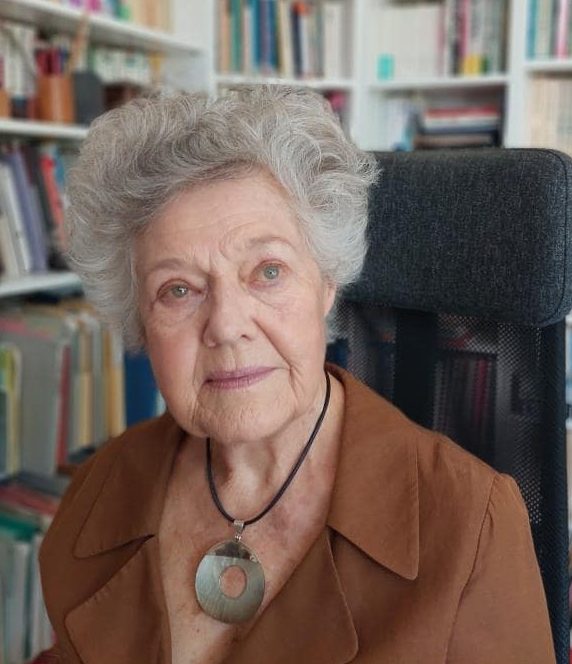
“With the new human right, a temperature assessment must surely become obligatory for all development applications, so no Canberrans discover that temperatures in their neighbourhood have suddenly climbed to unhealthy levels due to constructions in the vicinity not mitigated by vegetation,” writes BEATRICE BODART-BAILEY.
Among the bad news we receive there is, occasionally, a golden nugget getting little attention.

For instance, in July 2022, the General Assembly of the United Nations declared that “a clean, healthy, and sustainable environment is a human right.”
Just over two years later, on August 28 2024, the ACT government passed the Human Rights (Healthy Environment) Amendment Bill 2023, providing statutory recognition for the right to a clean, healthy and sustainable environment for all Canberrans. This is an Australian first.
It is perhaps no co-incident that this new human right was established by the UN at a time when the speeches of its Secretary General Antonio Guterres increasingly show his frustration and anger at UN Climate Change Conferences (COP = Conference of the Parties of the UNFCCC) closing with little advancement towards the goal of stopping rising temperatures while the world is battered by an increasing number of natural disasters these extreme temperatures cause.
COP 28 last year in Dubai prides itself of having attracted some 85,000 participants including more than 150 heads of state.
We are told that: “COP 28 was particularly momentous as it marked the conclusion of the first ‘global stocktake’ of the world’s efforts to address climate change under the Paris Agreement.”
The stocktake, predictably, showed that too little was achieved in the last eight years. Whether the declarations of this conference will result in action is another question, especially with it hosted by a country living from the extraction of oil. This month’s COP 29 took place in Baku, Azerbaijan, where the world’s first oil well was drilled in 1846.

Some 160 years earlier, in 1684, when the Westphalian physician Engelbert Kaempfer explored the “eternal fires” of the Baku peninsula, he noted the unhealthy appearance of the population and attributed it to the noxious fumes of the fires.
At the time, flames were fed by natural gas spills, mud volcanoes erupted with a loud roar, and there were fountains of black, evil-smelling oil, referred to as naphtha.
Much valued for the bright light it produced, the liquid was exported in sheep intestines loaded on donkeys. The bitterness of the Caspian Sea’s water, Kaempfer ascribed to oil spilling from the seafloor.
Today this area is covered with oil rigs, on land and in the sea. As the precious liquid conquered the world, so did the pollution, causing the drama of climate change with temperatures threatening human health and even survival.
The extraction and burning of fossil fuels made possible unprecedented advances in all fields of science and lifted living standards in large parts of the world.
During this development, powerful international companies and financial interest groups formed. Like in the tale of the sorcerer’s apprentice, governments have lost control of the enterprises they helped to create and welcomed. Like the American president elect, these multinationals promise a wonderful future, but take no responsibility for the harm they cause.
Temperatures are rising faster than ever before, with 2024 on track to be the hottest year on record.
Already in 2022, the CSIRO warned: “Heat-related deaths are predicted to grow by 60.5 per cent or more across major Australian capital cities from 2020–50, but this is likely to be a conservative estimate. Recent research suggests that official records of deaths attributed to excessive heat in Australia are underestimated by at least 50 fold.”
What can the new Human Right to a Healthy Environment achieve in this dire situation? It would be over optimistic to expect that it could stop world temperatures rising. But wherever statutory recognition is given to this new human right, people are surely entitled to protection from urban planning creating temperatures higher than the average.
In 2017, the CSIRO produced a heat map showing the variations of temperatures in the ACT. Naturally, the airport and industrial areas had higher temperatures than average due to the large amount of concrete without the mitigation of vegetation.
But the same applied to shopping centres and new suburbs where measures to reduce the so-called urban heat-island effect could have been taken. With the large number of new constructions during the interim seven years, a new heat map is a matter of urgency to show what projects have increased temperatures, so past mistakes can be avoided in future planning.
The newly released ACT Microclimate Assessment Guide offers help for planning by showing how to calculate temperatures surrounding future constructions and how to reduce them (the guide, unfortunately, still contains the outdated 2017 heat map).
With the new human right, a temperature assessment must surely become obligatory for all development applications (DA), so no Canberrans discover that temperatures in their neighbourhood have suddenly climbed to unhealthy levels due to constructions in the vicinity not mitigated by vegetation.
Some of the many questions raised by the introduction of the new human right will be discussed by the ACT Human Rights Commissioner, Dr Penelope Mathew, at the Inner South Community Council Forum, Eastlake Football Club, Griffith, 7pm on Monday, November 25. Details and registration at isccc.org.au
Historian Beatrice Bodart-Bailey is an honorary professor at the ANU School of Culture, History and Language and an emeritus professor of the Department of Comparative Culture, Otsuma Women’s University, Tokyo.
Who can be trusted?
In a world of spin and confusion, there’s never been a more important time to support independent journalism in Canberra.
If you trust our work online and want to enforce the power of independent voices, I invite you to make a small contribution.
Every dollar of support is invested back into our journalism to help keep citynews.com.au strong and free.
Thank you,
Ian Meikle, editor





Leave a Reply